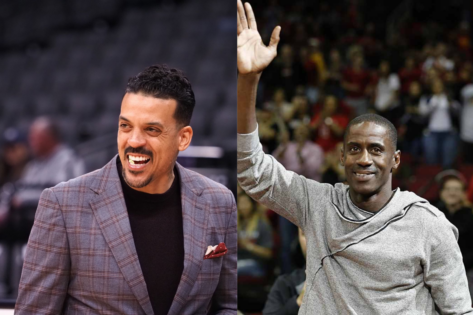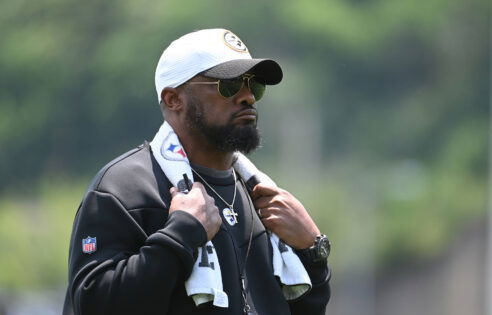Imagine stepping onto the court as a 17-year-old freshman, still growing into your frame, only to face a 26-year-old seasoned veteran with years of experience and physical maturity on his side. That’s exactly the kind of matchup the NCAA is producing today.
On 31 December 2024, 26-year-old Trevin Knell was part of the BYU Cougars side that won 76-56 over Arizona State – facing off against 17-year-old freshman Jayden Quaintance, one of the youngest players in the country. The contrast was glaring. One player was at the tail end of his collegiate career, the other barely old enough to vote.
This trend is not merely a statistical anomaly; it’s fundamentally altering the landscape of college basketball. When a 26-year-old is outmuscling and outsmarting a 17-year-old, is it really about talent or just years of extra growth and experience?
Upon hearing this, Vernon Maxwell, agitated, said, “Man you got to put an age limit on that shit man. You got 27-year-old mot———s and s–t.” He spoke candidly about the upper limit of the ages of the players playing college basketball. And it’s not just basketball in the NCAA that’s suffering; wrestling, an even more physical sport, faces the same problem.
Barnes made it clear that he doesn’t blame the players or coaches, acknowledging that older athletes play a crucial role in their team’s success. However, he highlighted the stark physical differences between younger and older players. “We know how big a difference between an 18-year-old body and a 22-year-old to a 24-year-old body. At 26, you’re coming into your man, you’re hitting your prime at 26-27-28 as an actual man. To think about that playing against, you know, kids who are 17, 18, it doesn’t make sense to me.”
While Barnes supports athletes staying in school for education, he believes it shouldn’t interfere with the integrity of the game. Can implementing an age cap to maintain competitive balance be a solution?
This isn’t just a minor inconvenience—it’s a fundamental issue that reshapes competition at the college level. The NCAA’s current eligibility rules make it possible for teams to stack their rosters with physically mature players in their mid-20s, drastically shifting the balance of power on the court
The age issue: What is Matt Barnes really talking about?
Here’s the problem: Some college teams are older than actual NBA rosters. No joke, Auburn’s 25-year-old Chad Baker-Mazara is older than 36% of OKC’s current roster. Let that sink in. That’s a full-fledged NBA team, younger than a college team. That’s not just a small gap; a fully developed athlete overmatches someone still growing into their body.
What’s worse than a talent gap? A talent gap that distorts the entire evaluation process. When older players outmuscle their younger counterparts, it’s not just an issue on the court—it’s a problem for scouts, coaches, and the future of the NBA. Players who should shine based on potential are overshadowed by older “prospects” with years of extra growth. If the NCAA continues to allow this, it risks misjudging the very players who will shape the future of the game.
The post Matt Barnes Gains 2x NBA Champ’s Backing in Urgent NCAA Fight With Bold Solution appeared first on EssentiallySports.



